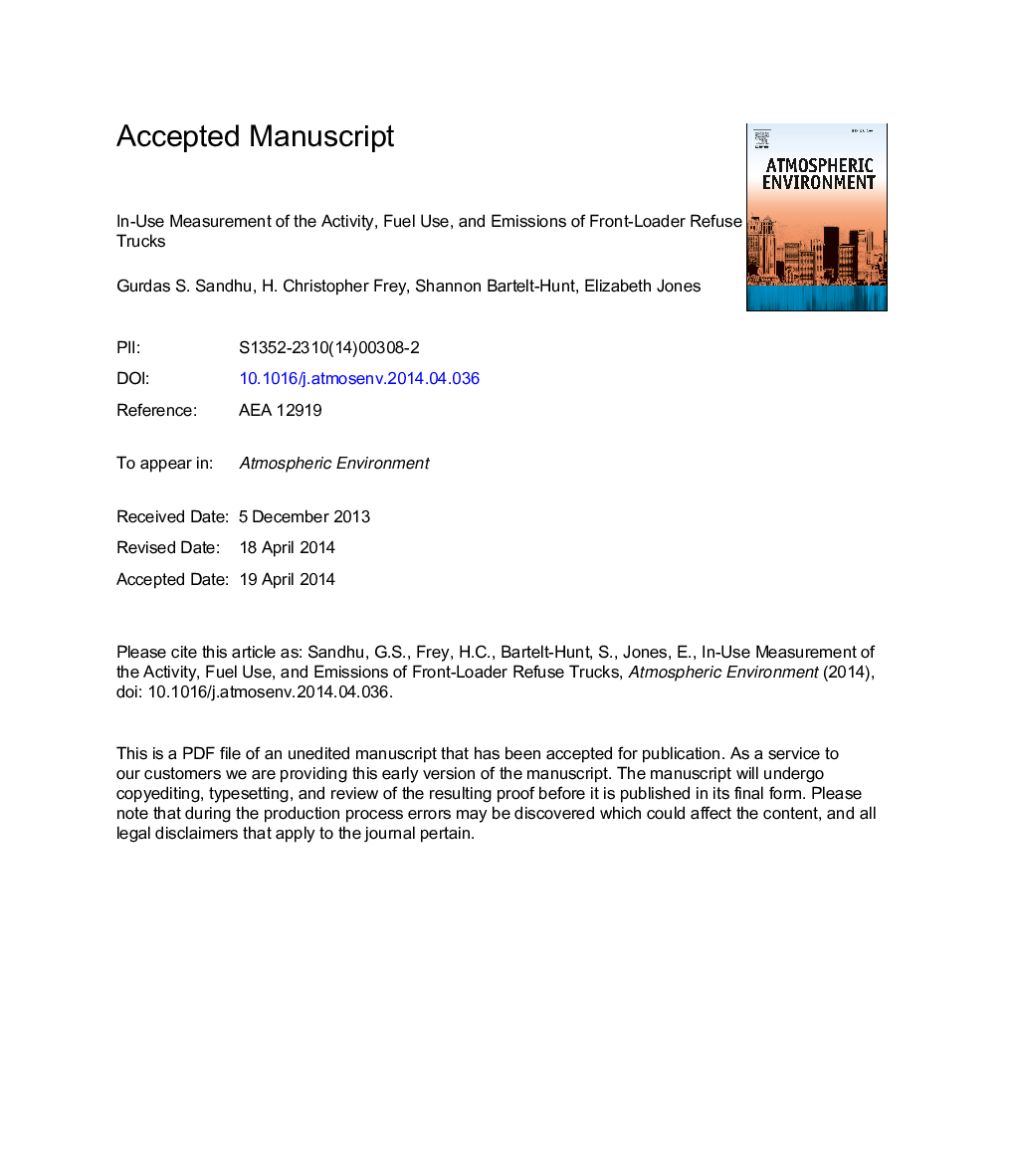| Article ID | Journal | Published Year | Pages | File Type |
|---|---|---|---|---|
| 6339432 | Atmospheric Environment | 2014 | 33 Pages |
Abstract
Field measurements were made for six front-loader refuse trucks for over 560 miles (901 km) and 47 h of operation using a portable emissions measurement system, electronic control unit data logger, and global positioning system receivers. Daily activity, fuel use rates, and emission rates are quantified in terms of operating mode bins defined by the U.S. Environmental Protection Agency for the MOVES emission factor model. On average, 44 (±4) percent of time was spent at idle, 5 (±1) percent braking or decelerating, 11 (±2) percent coasting, 23 (±3) percent cruising or accelerating at low speed (up to 25 mph, 40.2 kmph), 10 (±2) percent cruising or accelerating at moderate speed (25-50 mph, 40.2 to 80.4 kmph), and 7 (±3) percent cruising or accelerating at high speed (50 mph, 80.4 kmph or higher). Fuel use and emission rates varied among operating modes by factors of 6-24. The estimated daily activity cycle average fuel economy ranges from 2.3 to 3.2 mpg (0.98-1.4 kmpl). The PM emission rates for trucks with diesel particulate filters are 98 percent lower compared to those without. Variation in truck weight lead to differences in average fuel use and emission rates of 20 percent or less, except for hydrocarbons. The variation in the empirically-based daily activity cycle average rates were highly correlated with MOVES estimates, except for hydrocarbons. The data collected here are useful for quantifying daily activity specific to front-loaders, and for developing fuel use and emission estimates and models for this type of vehicle.
Related Topics
Physical Sciences and Engineering
Earth and Planetary Sciences
Atmospheric Science
Authors
Gurdas S. Sandhu, H. Christopher Frey, Shannon Bartelt-Hunt, Elizabeth Jones,
